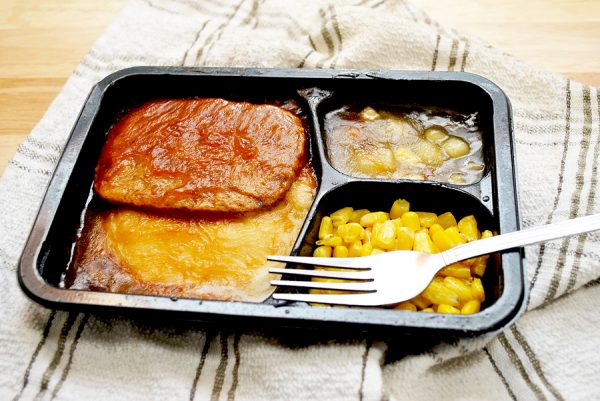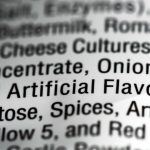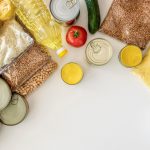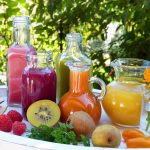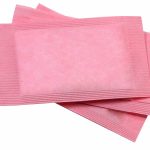Grocery store shelves are loaded with row after row of canned, boxed, bagged and other packaged foods that are so over-processed that I hesitate to even call them food.
They fall into the category of “ultra-processed foods.” In addition to salt, sugar and fat, they contain a vast amount of artificial ingredients that would never be found in nature.
Some of the substances found in ultra-processed products include non-sugar sweeteners, color stabilizers, bulking agents, emulsifiers, flavor enhancers and all sorts of other additives. These ingredients are guaranteed to fatten you up while leaving you feeling weak and hungry.
You see, when manufacturers make fake food, the taste, texture and smell can be pretty disgusting. To make them more appealing, manufacturers add a cocktail of chemicals created by chemists known as “flavorists.” It’s their job to engineer flavors to make these fake foods look, taste and smell savory.
But here’s the thing. These flavorists spend years carefully formulating chemical blends specifically designed to hijack our taste buds. In fact, the best formulations can literally trick your brain so it doesn’t know when to stop eating.
As a matter of fact, research published in the November, 2022 issue of Addiction finds that highly processed foods meet the same criteria for addiction as cigarettes.
Specifically, highly processed foods…
- Trigger compulsive use
- Cause brain changes that alter mood
- Reinforce addictive behavior
- Trigger strong urges or craving
These aren’t the only parallels between ultra-processed foods and tobacco products. As it turns out, highly processed foods are just as bad for your health as cigarettes.
Studies find that ultra-processed foods are associated with inflammation, cognitive decline, cardiovascular disease, high blood pressure, obesity, metabolic disorders, cancer, gastrointestinal disorders and premature death.
Not All Ultra-Processed Foods are Obvious
Some ultra-processed foods are obvious. You already know things like white bread, cake, candy, cookies, chips, ice cream, pizza, hot dogs and other “junk food” are over processed. And you probably avoid them for the most part.
But there are others that may not be as clear cut. For example, do you snack on energy bars? How often do you enjoy a diet soda… a fruit drink… or an energy drink? Do you drink weight loss or nutrition shakes like SlimFast or Ensure?
When is the last time you ate a pre-packaged ready-to-heat meat, fish, vegetable or cheese dish? Packaged soup? Instant noodles? Chicken nuggets? Canned or packaged sauces and gravies? Margarine or other spreads?
There is a simple key to identifying ultra-processed foods. On the ingredient list, you’ll find items that aren’t normally used when preparing food. If five or more of the items listed aren’t “food,” it’s considered ultra-processed.
So let’s say you grab a packet of dehydrated vegetable soup. Veggies will likely be the first to appear on the ingredient list. But right after that, you’ll see a lot of additives like corn syrup, yeast extract, sodium citrate, disodium guanylate, disodium inosinate and hydrolyzed vegetable protein.
You would never see those ingredients in a recipe for vegetable soup!
And these compounds are so completely unnatural to your digestive tract that healthy gut microbes have no idea how to react to them. Instead, unhealthy bacteria begin to flourish and take over your gut microbiome.
Eventually, these bad microbes start dictating your food choices. They activate nerve signals that link your stomach to your brain (the gut-brain axis) – basically telling your brain to eat more of these foods so they can grow and thrive.
In other words, they manipulate eating behavior to increase their strength and overwhelm the good bacteria in your gut.
The good news is that it only takes about five days to break the addiction to processed foods.
Breaking the Addiction to Ultra-Processed Foods
The very first thing I recommend is arming yourself with a good probiotic formula. Look for one that includes a prebiotic and multiple live strains of beneficial bacteria. The higher the colony count, the better off you’ll be.
Now, a probiotic alone isn’t a cure-all. But it will provide much needed support while you work on kicking your addiction to ultra-processed foods.
The fastest way to replenish healthy gut bacteria is eating a more natural, plant-based diet. Healthy fruits, vegetables, nuts and beans are all associated with a highly diverse microbiota. The more variety you include, the healthier your gut will be.
Meat, on the other hand, can throw the gut microbiome out of whack. This is one of the reasons I recommend limiting meat to about 15% of your diet, and always choose from grass-fed livestock, wild-caught fish or organic, pasture-raised poultry.
After a few days of making these healthy food choices, the good bacteria in your gut microbiome will kick in and prevent you from craving more processed foods.
All in all, the fewer the ingredients and the more natural foods a product contains, the healthier it will be for you.
SOURCES:
Gearhardt AN, DiFeliceantonio AG. Highly processed foods can be considered addictive substances based on established scientific criteria. Addiction. 2022 Nov 9. Epub ahead of print.
Monteiro CA, Cannon G, Levy RB, Moubarac JC, Louzada ML, Rauber F, Khandpur N, Cediel G, Neri D, Martinez-Steele E, Baraldi LG, Jaime PC. Ultra-processed foods: what they are and how to identify them. Public Health Nutr. 2019 Apr;22(5):936-941.
Eduardo A.F. Nilson, Gerson Ferrari, Maria Laura C. Louzada, Renata B. Levy, Carlos A. Monteiro, Leandro F.M. Rezende. Premature Deaths Attributable to the Consumption of Ultraprocessed Foods in Brazil. Am J Prev Med. Nov 2022. Online ahead of print.
Gomes Gonçalves N, Vidal Ferreira N, Khandpur N, Martinez Steele E, Bertazzi Levy R, Andrade Lotufo P, Bensenor IM, Caramelli P, Alvim de Matos SM, Marchioni DM, Suemoto CK. Association Between Consumption of Ultraprocessed Foods and Cognitive Decline. JAMA Neurol. 2022 Dec 5. Epub ahead of print.
Monteiro CA, Cannon G, Levy RB et al. NOVA. The star shines bright. [Food classification. Public health.] World Nutrition. 2016;7(1-3):28-38.
Alcock J, Maley CC, Aktipis CA. Is eating behavior manipulated by the gastrointestinal microbiota? Evolutionary pressures and potential mechanisms. Bioessays. 2014 Oct;36(10):940-9.
